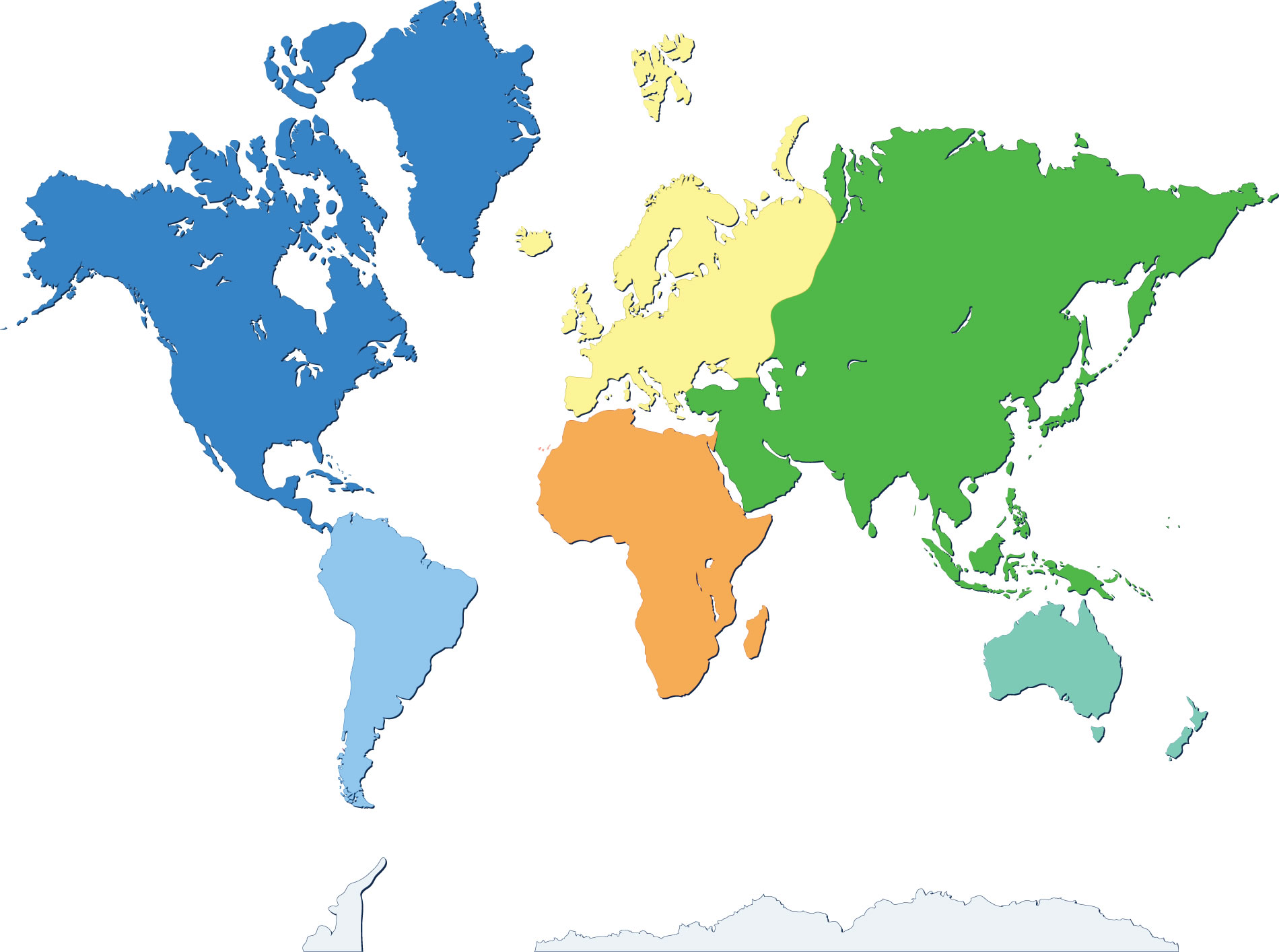
Finding its reference in Latin as contĭnens, contĭnentis, interpreting the idea of continuity, formed from continēre, which indicates the action of ‘containing’, conjugating the suffix con-, as a linguistic property of encounter, and the verb tenere, for ‘to have’, based on the Indo-European *ten-, for ‘to tend’. Thus, in ancient Rome the expression terracontĭnens was proposed, describing the idea of continuity around the unity of the different plots of land -separated by the blue of the oceans- that make up the planet, and which in those times comprised Europe (seen in the Latin Europa, from the Greek Εὐρώπη), Africa (seen in Latin as Afrĭcus) and Asia (seen in Latin as Asia, from the Greek Asia).
Later, America (named as such in 1507, in reference to Americo Vespucci) and Oceania (given in Greek as okeanos) would be incorporated, and currently there are discussions about the assignment as such to Antarctica (in Latin as antarctĭcus, from the Greek antarktikos) as well as the classification of North and South America, on a setting where the dominant countries exert pressure based on their particular geopolitical interests.
The geological cores of the Earth are always in motion, and in fact sometimes they make themselves felt by producing natural catastrophes from tsunamis or earthquakes, which is why the current configuration may change in the future. In one way or another, for the UN, today it stands at five.